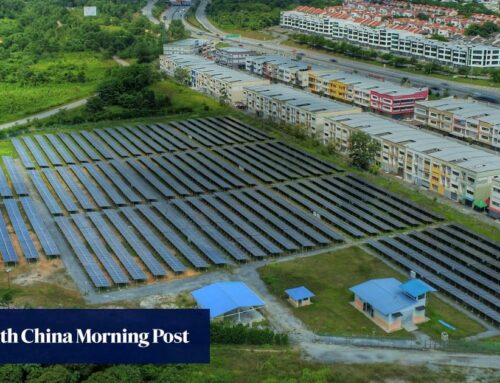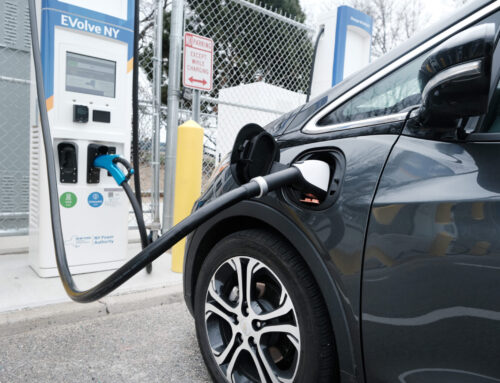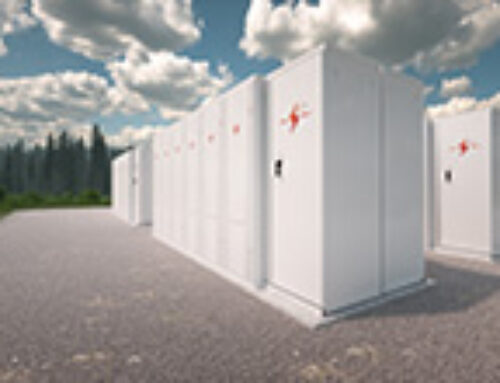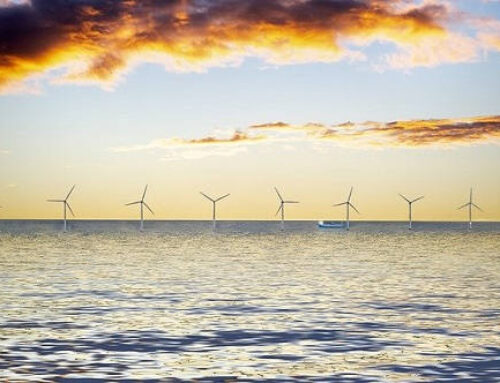Alaska Utilities Turn to Renewables as Costs Escalate for Fossil Fuel Electricity Generation
October 8, 2024
This story was produced in a collaboration between Inside Climate News and the Anchorage Daily News.
ANCHORAGE, Alaska—In 2017, Jenn Miller and her husband, Chris Colbert, decided to put solar panels on the roof of their house. They were both engineers, employed by Alaska’s oil and gas industry, and figured they could cut costs by working on their own design and installation.
With the knowledge that they gained from that Anchorage home improvement project, they tackled a pilot solar farm project to produce electricity for a utility. Once that project was up and running, Miller quit her day job at BP to focus full-time on solar power as chief executive officer of Renewable IPP. Last year, the company began operating the state’s largest solar project, which is built on 45 acres of a fire-scarred patch of land near the Matanuska-Susitna Valley community of Houston. When running at peak capacity, the panels can generate enough electricity for 1,400 homes.
The arc of the project’s power production is shaped by the sun’s huge seasonal swings in Southcentral Alaska, which is bathed in more than 19 hours of daylight in June, but cloaked in darkness through much of December. More than 90 percent of the solar farm’s power is produced from February through October
“When we told colleagues, I think there was this shock value of solar and Alaska in the same sentence,” Miller said. “But we had run the numbers, and we’re like ‘This totally works.’”
For clean power advocates, putting more renewables onto the grid is a first step in a broader transformation of Alaska’s energy industry. The state could eventually harness electricity produced by Alaska’s vast wind, geothermal and tidal resources to make hydrogen for green fuels.
But greening this grid is complicated by the state’s geographic isolation.
In most of the Lower 48 states, as wind and solar power generation rises and falls, utility managers can purchase power from other states so that electricity consumption matches production, which is essential to avoiding brownouts or blackouts.
In Alaska, there is no way to access power from outside the state.
Most of the population lives in the Railbelt, which stretches for some 700 miles from the Kenai Peninsula to communities north of Fairbanks. Five utilities serve this region, but connections between them are frail, so it is difficult, at times impossible, to efficiently move power from one area with a surplus to others in need.
Work is underway to strengthen the grid by doubling the capacity of the lines that run between the Kenai Peninsula and Anchorage. Within the next decade, there also will be a second, undersea line, coupled with battery storage, that will give utilities more flexibility to quickly move power about the grid. Still, additional improvements are needed, including a second line connecting Anchorage to Fairbanks estimated to cost more than $700 million.
“We have a very old and outdated grid,” said Curtis Thayer, executive director of the Alaska Energy Authority, a state agency charged with reducing the cost of energy. “This is our biggest challenge.”
Railbelt utilities, which are organized as cooperatives, also are grappling with declining production from Cook Inlet natural gas fields that for decades have been a key energy source for power generation. As early as 2027, the utilities expect to import liquified natural gas, a more expensive proposition than turning to renewables, according to a study released earlier this year by the National Renewable Energy Laboratory.
Currently, Alaska’s biggest source of clean power is hydroelectricity. It generates more than 20 percent of the state’s electricity—and in some communities outside the Railbelt represents the main source of power. The largest facility, the 120-megawatt Bradley Lake Project, a dam on a glacier-fed Kenai Peninsula lake, came on line in September 1991. It produces enough electricity for 54,000 Railbelt homes. An expansion proposal, involving an additional diversion dam and tunnel, is estimated to cost $350 million, and could boost peak output by nearly 50 percent.
The federal study found solar and wind could play a much bigger role in generating Alaska’s electricity. But there would need to be more battery storage, as well as grid upgrades that would enable quicker, more efficient transmission of power from one area to another.
““There’s going to be a lot of stuff utilities will need to do. Even so, compared to imports of liquified natural gas, there should still be substantial cost saving opportunities,” said Paul Denholm, a co-author of the National Renewable Energy Laboratory study.
Renewables Running Against the Wind
But in a state long reliant on fossil fuels to generate most power, some of Alaska’s renewable power pioneers found their projects to be a tough sell.
“I have got years of scars from battling with the utilities,” said Mike Craft, who in September 2010, began operating a Delta Junction wind power project of less than 2 megawatts, and has struggled for years to expand generation.
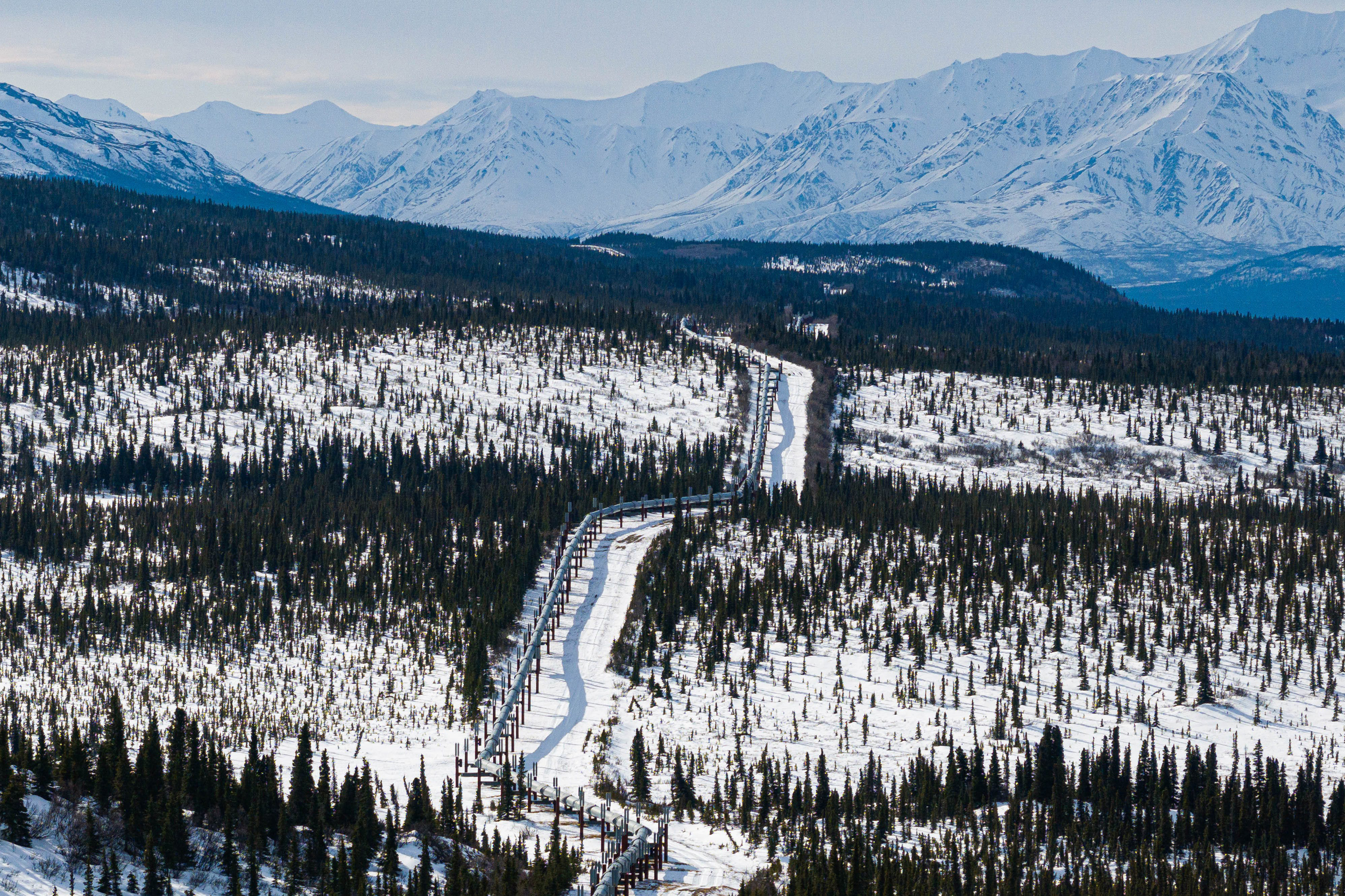
Craft is a land developer who experimented with smaller wind turbines before building the nearly $4 million Delta project with the help of investors and a state grant. The project’s power production peaks in the winter when demand for the electricity also is high.
Through years of hands-on operations, Craft has learned how to keep turbines operating even during periods of extreme cold. Bolts, for example, have to be designed with special alloys so they don’t become brittle and snap. Motors within the turbines require insulating fiberglass blankets and heaters to keep lubrication oil from thickening.
During the last week in January, interior Alaska was hit with some of the coldest temperatures of the past decades. Though winds dropped off sharply and slashed power production, the Delta project was online 24 hours a day.
“When you operate a turbine at minus 40, that’s an accomplishment. And I do it on a regular basis,” Craft said. “We’re very proud of that. It took a lot of effort.”
The electricity from the site’s turbines is purchased by the Golden Valley Electric Association, a co-op utility serving the Fairbanks area that has some of the highest utility rates in the nation and generates most of the members’ power from coal-fired, diesel and naphtha power plants.
During the past decade, Craft made multiple proposals to scale up his wind project. Golden Valley rejected those, even as the utility opted to build its own wind turbine project at another site, Eva Creek, which began producing power in 2012.
“I have got years of scars from battling with the utilities.”
Mike Craft, Delta Junction wind power project
Those denials prompted Craft to make an unsuccessful appeal to Alaska regulators, and to file a lawsuit in state court, which he also lost.
Craft did not give up. He has a new partner,Ameresco, a renewable energy developer, which is negotiating with Golden Valley to operate a 34.5 megawatt project on the site.
Still, there are delays.
“I would have hoped we would have done the dirt work this summer, and ordered the turbines,” Craft said. “Now, that’s been put off for another year. A lot of people think I’m crazy that I’ve stayed on this.”
Travis Million, Golden Valley’s chief executive officer, said the utility is currently trying to determine the least-expensive power options for the future.
The utility has to find new ways to generate baseload power that can be dispatched on demand, Million said. One of the Golden Valley coal-fired power plants was designed with technology to burn the fuel more cleanly, but it has failed to operate reliably and is targeted to be shut down. Geothermal and biomass electricity generation are possible options. There will also be a need for more wind power, and Golden Valley is currently evaluating the Delta expansion and another project.
“That’s all I can say at this point. We’re working with them to try to advance some of these projects based on what would be the best benefit for (utility) members,” Million said.
Trickle-Down Energy Transition
In southcentral Alaska, some independent power producers have focused on small-scale “micro” hydro projects that capture the power of mountain streams.
David Brailey, a petroleum geologist turned hydrologist, operates the Juniper Creek project, which diverts some of the water from a creek that drops down a steep brush-covered gorge frequented by brown bears. From June through October, the project can produce nearly one-third of a megawatt of power—enough electricity for several hundred homes. Flows then decline through the late fall, winter and spring months.
“It’s predictable, and that’s perfect,” Brailey said. “That’s what you need. I can guarantee it.”
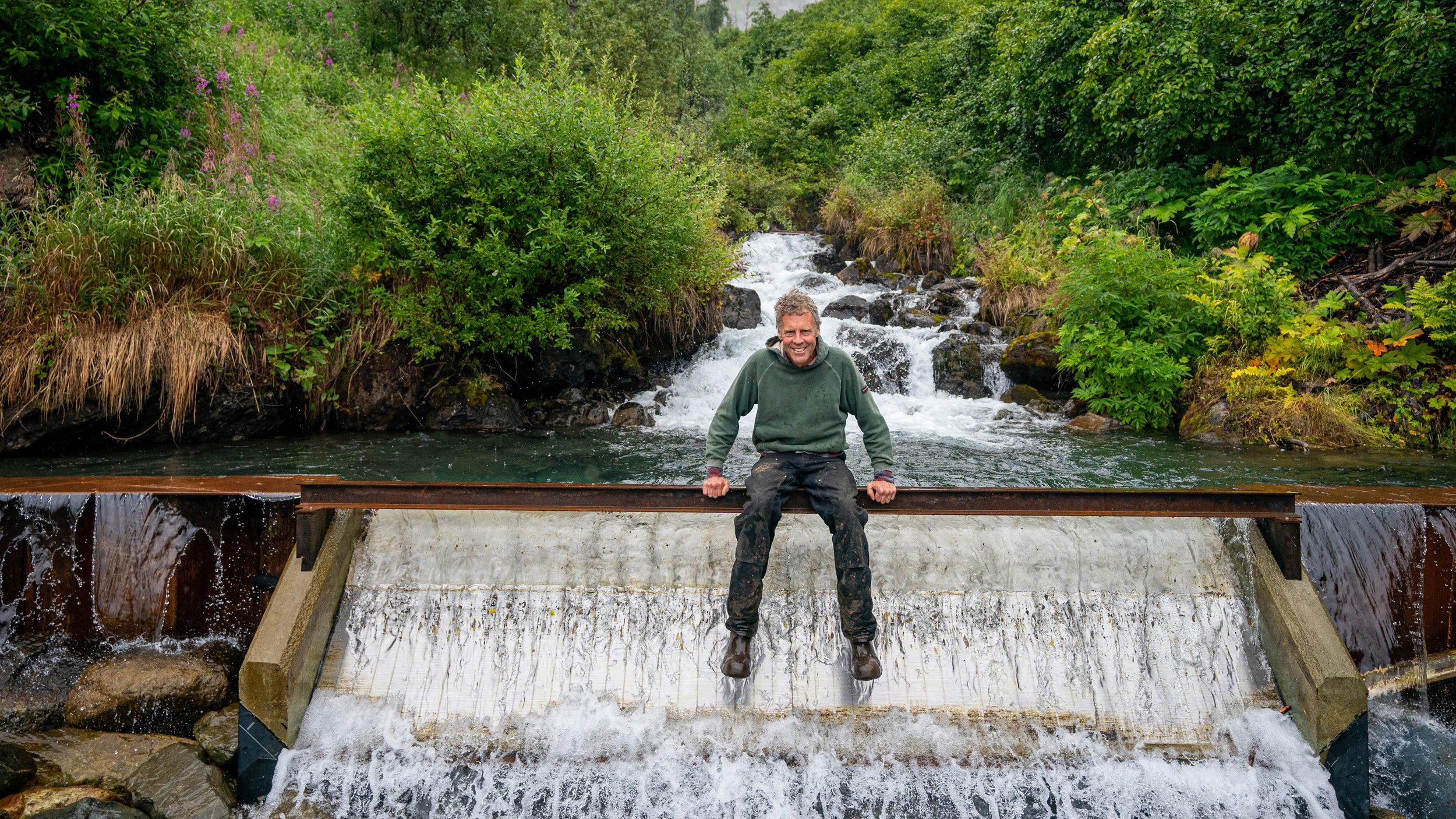
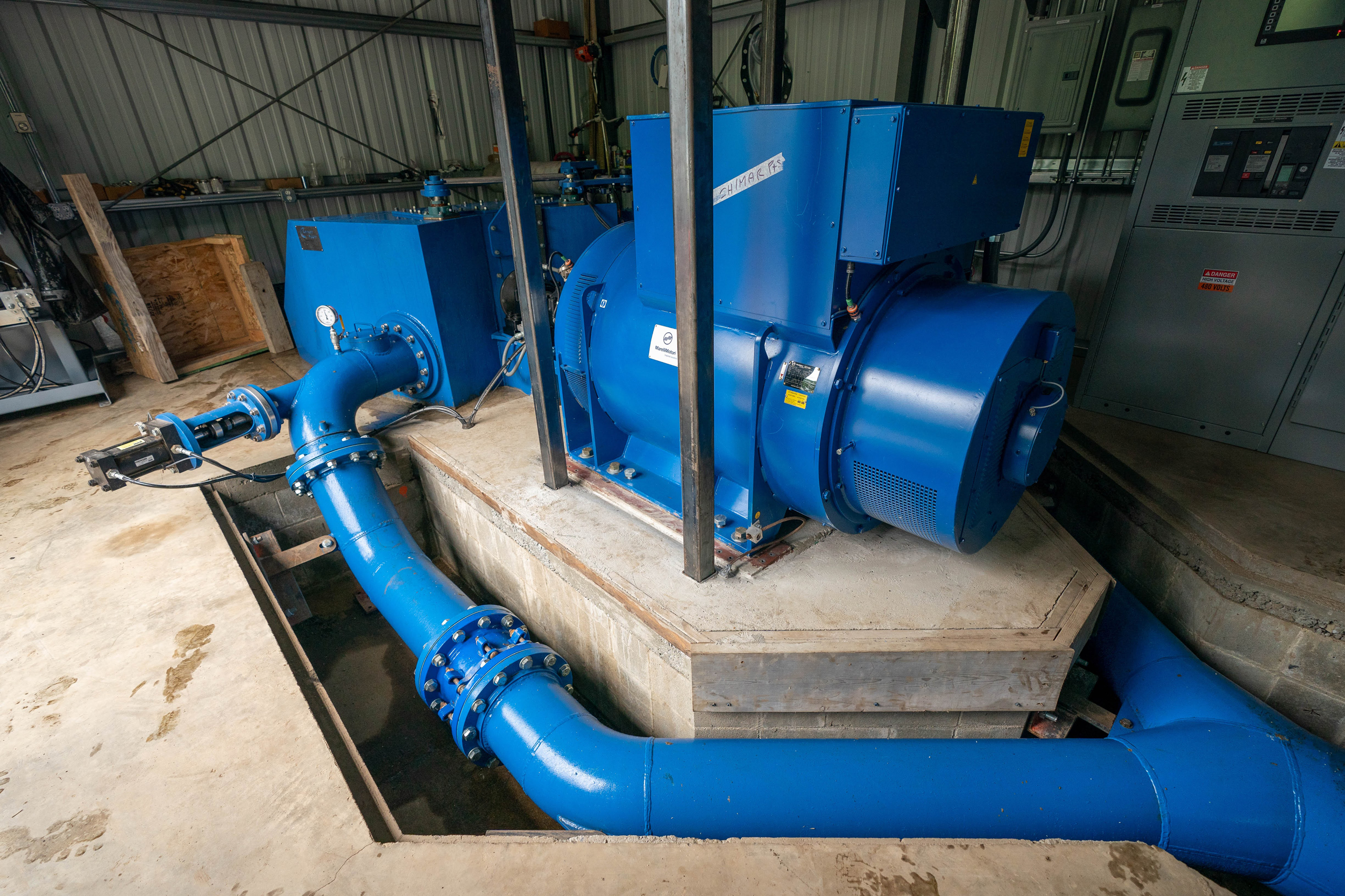
For Brailey, Juniper Creek, which is co-owned by his wife, Melanie Janigo, and two close friends, has been an obsession that involved more than a decade of stream monitoring, permitting and sleepless nights pondering the risks of a $1.7 million investment.
The project lies within a 160-acre tract that Brailey owns in the Eagle River area northeast of Anchorage. Brailey did some of his own construction, renting an excavator to carve out an access road to the generator shed and laying the concrete foundation for the small building that houses the turbine, which sits more than 300 feet below a spillway intake pipe.
Brailey sells his power to the Matanuska Electric Association, a Railbelt utility that is expected to have to turn to imported LNG to generate electricity before the end of this decade.
Though utility officials want to bring on more renewables, Brailey found negotiations with them were a long, frustrating process. He hoped to be paid a premium for reliable, predictable power generated without greenhouse gas pollution. Instead, the utility offered a price tied to the current costs of generating power from natural gas that will only rise as the gas price rises.
“The benefit that we give to the environment by producing carbon-free energy is worth nothing,” Brailey said.
This story is funded by readers like you.
Our nonprofit newsroom provides award-winning climate coverage free of charge and advertising. We rely on donations from readers like you to keep going. Please donate now to support our work.
Utility officials say that they will take as much power as Brailey can produce, But they note that the hydro project’s generation slumps in the winter, when demand peaks. “There’s no extra value to our members to justify a higher price,” said Julie Estey, the utility’s chief strategy officer.
Still, even without a premium on carbon-free electricity, the pace of renewable energy development in Alaska is quickening.
Miller’s Renewable IPP has a leadership team that includes her husband Colbert and two other petroleum engineers—Sam Dennis and Grant Smith, both of whom are partners. And the company has gained the backing of CleanCapital, a New York-based investment firm, which financed the solar farm near Houston, Alaska and also took an ownership stake.
The Houston solar farm’s design reflects the lessons learned through operation of their pilot project.
The solar panels are bifacial, which means they can absorb not only direct sunlight but reflection from the winter and spring snowpack.
They are sloped at angles steep enough to shed snow after storms, and are elevated three feet off the ground, so that sloughing snow has somewhere to fall before being removed by an industrial strength blower that periodically makes winter passes through the project.
The rows of panels have to be spaced farther apart than in the Lower 48 because the northern sun angles are lower—and cast longer shadows. So, if the rows were closer together, the panels would shade each other out.
This means Alaska solar farms require more land to generate power. But the bigger spaces between the rows—wide enough to drive tractors through—offer a greater opportunity for cultivating food crops such as potatoes. With the aid of a federal grant, a test of this farming potential will happen next year at the Houston project in a collaborative effort with the University of Alaska Fairbanks.
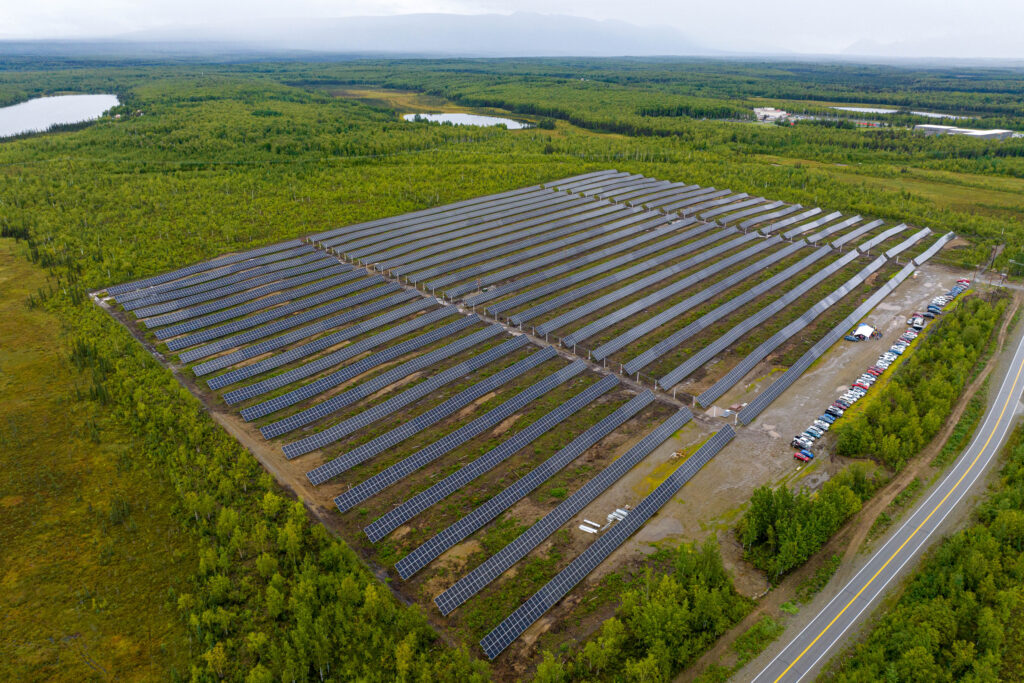
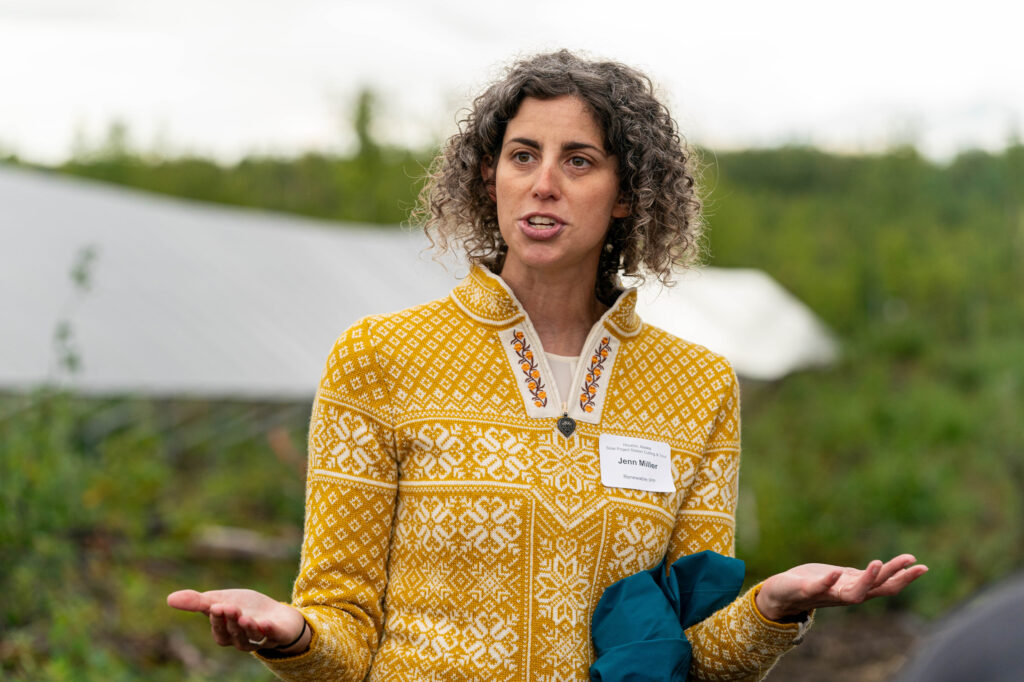
Renewable IPP, so far, has not faced the kind of strong, organized opposition that has slowed, and at times stymied, some solar development in the Lower 48. But in the Matanuska Susitna Valley, some people were initially wary about putting solar farms on rural lands, and Miller acknowledges the potential for more of a backlash as the solar footprint expands. She hopes that finding a way to use the acreage for food production as well as energy will help ease those concerns and also boost the profitability of these ventures.
“While we have a lot of land (in Alaska), we don’t have a lot by the road system. And, so, if we’re tying that up, people will want to see that we are using it well,” Miller said.
The power is purchased by Matanuska Electric Association under a fixed rate contract signed two years ago that was set below the cost of natural gas. Since then, gas prices have climbed and the Houston project’s solar power in recent months has sold for 10 to 20 percent less than what ratepayers pay for gas-generated electricity, according to Miller.
Miller said that inflation raised construction costs more than forecast, and at one point prompted her and her partners to reconsider the project. But she is not discouraged, and has been scouting for new Alaska sites for the photovoltaic panels. The next project, which was announced in August, is planned for the Kenai Peninsula, and will be more than five times the size of the Houston solar farm.
“We need to save the planet. But most people can’t afford an increase in their power bill,” Miller said. “When we talk about an equitable transition, it has to be a cost-competitive transition so it makes sense for everybody.”
About This Story
Perhaps you noticed: This story, like all the news we publish, is free to read. That’s because Inside Climate News is a 501c3 nonprofit organization. We do not charge a subscription fee, lock our news behind a paywall, or clutter our website with ads. We make our news on climate and the environment freely available to you and anyone who wants it.
That’s not all. We also share our news for free with scores of other media organizations around the country. Many of them can’t afford to do environmental journalism of their own. We’ve built bureaus from coast to coast to report local stories, collaborate with local newsrooms and co-publish articles so that this vital work is shared as widely as possible.
Two of us launched ICN in 2007. Six years later we earned a Pulitzer Prize for National Reporting, and now we run the oldest and largest dedicated climate newsroom in the nation. We tell the story in all its complexity. We hold polluters accountable. We expose environmental injustice. We debunk misinformation. We scrutinize solutions and inspire action.
Donations from readers like you fund every aspect of what we do. If you don’t already, will you support our ongoing work, our reporting on the biggest crisis facing our planet, and help us reach even more readers in more places?
Please take a moment to make a tax-deductible donation. Every one of them makes a difference.
Thank you,
Search
RECENT PRESS RELEASES
Related Post

